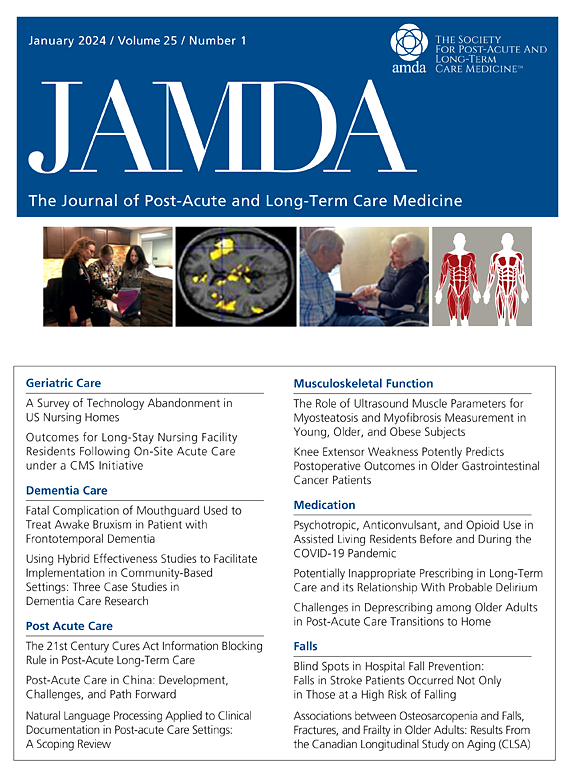High Anticholinergic Burden of Patients Hospitalized for Hip Fracture Reveals a Target for Deprescribing
IF 4.2
2区 医学
Q2 GERIATRICS & GERONTOLOGY
Journal of the American Medical Directors Association
Pub Date : 2025-03-21
DOI:10.1016/j.jamda.2025.105537
引用次数: 0
Abstract
Objectives
Anticholinergic medications can produce harmful side effects, such as ataxia and delirium, in older adults. Older adults with hip fractures are particularly vulnerable, yet they are often prescribed these medications. This study aimed to evaluate the anticholinergic burden (ACB) before and after hospitalization for hip fracture, to identify potential targets for deprescribing.
Design
This is an observational retrospective cohort study. Patients with hip fractures between 2012 and 2018 were identified from Medicare Provider Analysis data. Medications were identified from Medicare Part D claims at the time of fracture and from Omnicare claims 100 days post-discharge. The analysis focused on individuals with high pre-fracture ACB scores (≥3), as they had potential for deprescribing.
Setting and Participants
The study included individuals aged 66+ hospitalized for hip fractures who received post-acute care in Omnicare-contracted skilled nursing facilities.
Methods
Pre- and post-fracture ACB scores were calculated using the ACB scale. Patients were stratified by post-fracture ACB changes (increase, decrease, or no change). Demographics and comorbidities were described using means and percentages. The top 10 most prescribed anticholinergic medications with ACB score 2 or 3 were identified, and prescription rates were compared before and after fracture.
Results
Of 351,286 eligible patients, 138,966 (40%) had a high pre-fracture ACB score. The mean age was 83.5 years, and 78.9% were female. Post fracture, 42.6% of patients with a high ACB experienced a decrease in ACB, 9.9% had an increase, and 47.5% saw no change. Commonly prescribed anticholinergics included overactive bladder agents, antipsychotics, antidepressants, antihistamines, and opioids.
Conclusions and Implications
Forty percent of patients had a high ACB at fracture, and fewer than half experienced a decrease in ACB after fracture. Antipsychotics were overprescribed, and many patients remained on ineffective overactive bladder agents. There is a need for standardized deprescribing practices for patients with hip fractures in post-acute care settings.
求助全文
约1分钟内获得全文
求助全文
来源期刊
CiteScore
11.10
自引率
6.60%
发文量
472
审稿时长
44 days
期刊介绍:
JAMDA, the official journal of AMDA - The Society for Post-Acute and Long-Term Care Medicine, is a leading peer-reviewed publication that offers practical information and research geared towards healthcare professionals in the post-acute and long-term care fields. It is also a valuable resource for policy-makers, organizational leaders, educators, and advocates.
The journal provides essential information for various healthcare professionals such as medical directors, attending physicians, nurses, consultant pharmacists, geriatric psychiatrists, nurse practitioners, physician assistants, physical and occupational therapists, social workers, and others involved in providing, overseeing, and promoting quality

 求助内容:
求助内容: 应助结果提醒方式:
应助结果提醒方式:


